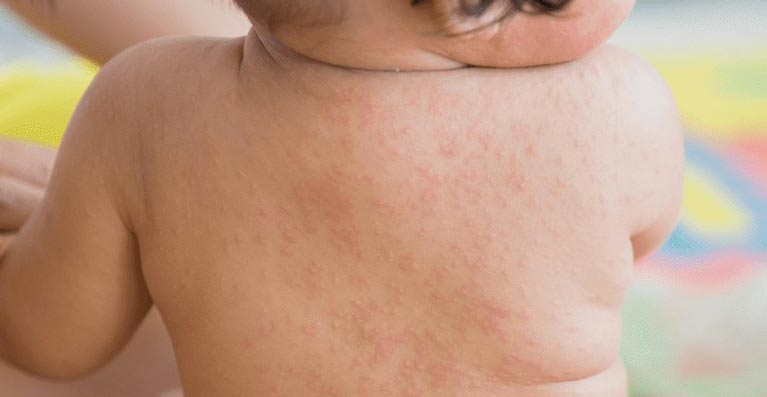Roseola infantum: Symptoms, Prevention, Treatment - Explained by Dr. Yeung Ho Hong(楊浩康)
Causes of Infantile Rose Rash
Infant roseola, also known as exanthem subitum, is a common and mild viral infection that mainly affects infants and young children, causing a sudden spike in fever and the subsequent appearance of a characteristic rash. The infection is caused by the human herpesvirus 6 (HHV-6) and, in some cases, by human herpesvirus 7 (HHV-7). Although the term "roseola" might evoke images of a striking skin rash, the condition is generally benign and self-limiting, with most children recovering fully without complications.

Symptoms of Infantile Rose Rash
Roseola typically affects children between 6 months and 2 years of age, with approximately 95% of children having been infected by the time they reach two years old. One of the challenging aspects of roseola is that the virus is contagious even before the onset of symptoms. It spreads through respiratory secretions—such as the droplets expelled when an infected child coughs or sneezes—making it difficult to prevent transmission in settings such as families and daycare centers. However, once the symptoms appear, the child is usually no longer contagious.
Care and Treatment of Infantile Rose Rash
The clinical course of infant roseola begins when an affected child suddenly develops a high fever, which may persist for three to five days. During the fever phase, the child may be irritable, experience poor appetite, and have disrupted sleep patterns. In some cases, before the rash appears, the fever itself can be quite alarming for parents. As the fever subsides, a distinctive rash emerges. This rash is typically composed of small, raised red spots that first appear on the trunk and then spread to the arms and legs, though it rarely affects the face. The lesions are usually blanchable—turning white when pressed—and tend to last for about two days before fading away.
It is important to note that not all children with roseola develop the rash, and some may only experience the high fever. Additionally, in very rare cases, the abrupt rise in temperature can lead to febrile seizures, which, while frightening, are usually benign and resolve without lasting effects. These seizures tend to occur in a small percentage of patients, and managing the fever is key to reducing their risk.
Treatment for infant roseola is primarily supportive, as there is no specific antiviral medication recommended for this self-limiting viral infection. The mainstay of therapy includes the use of antipyretics like acetaminophen (paracetamol) to lower fever and help the child feel more comfortable. It is also crucial to ensure that the child receives an adequate amount of fluids to prevent dehydration during the febrile phase. Parents are advised to closely monitor the child's temperature and general behavior, and to seek medical advice if the fever persists for more than a few days or if any unusual symptoms develop.
There are several common misconceptions about infant roseola that can cause undue anxiety among parents. One such misconception is that the rash itself indicates a severe or dangerous condition. In reality, the rash is simply a sign that the immune system is reacting to the virus, and it usually resolves on its own without any lasting effects. Another misunderstanding is that a high fever is always a sign of a more serious illness; while high fever can be concerning, in the case of roseola it is typically transient and followed by a rapid recovery once the infection has run its course.
For example, one parent recalled how her baby developed a high fever for four consecutive days and, as the temperature began to return to normal, a widespread red rash appeared on the trunk and limbs. Initially, the mother was extremely worried about the severity of the illness, but after consulting with her pediatrician and learning that these symptoms were typical of roseola, she was relieved to know that the condition was self-limiting. With careful fever management and plenty of fluids, the baby’s symptoms improved significantly over the next few days, and the rash gradually faded, allowing the child to resume normal activities.
In conclusion, although infant roseola can be a source of worry due to its sudden onset of high fever and appearance of a rash, it is generally a mild and self-limiting viral infection that does not require aggressive treatment. Simple supportive measures—such as administering antipyretics, ensuring sufficient fluid intake, and keeping the child comfortable—are usually sufficient to allow a full recovery within a few days to a few weeks. Parents are encouraged to remain calm, observe the child’s condition carefully, and consult a healthcare professional if any persistent or unusual symptoms arise. By understanding that roseola is a normal part of early childhood development, parents can better manage the situation and reduce their anxiety while ensuring their child’s continued health and well-being.
